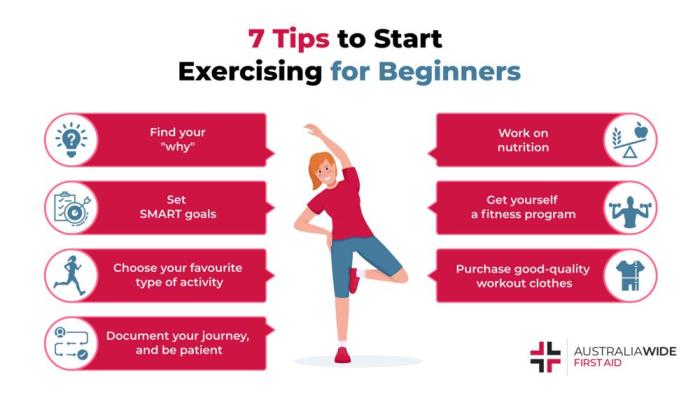How to deal with coworkers who complain about you is a crucial skill for navigating any workplace. Understanding the root causes of complaints, from personality clashes to unspoken expectations, is key to effectively addressing the issues. This guide will equip you with the tools to recognize your own actions, address complaints head-on, and build positive communication strategies for a healthier work environment.
We’ll explore the different types of complaints, from work ethic to communication styles, and offer practical steps for improving your interactions with colleagues. You’ll learn to identify patterns, address concerns assertively, and foster a more collaborative atmosphere. Ultimately, this guide aims to empower you to handle complaints constructively and maintain professional boundaries in the workplace.
Understanding the Root Causes
Coworker complaints, though often perceived as personal attacks, frequently stem from underlying issues within the workplace environment. These issues can range from personality clashes to communication breakdowns, highlighting the importance of understanding the root causes to address the problem effectively. Recognizing these patterns allows for more constructive solutions and fosters a more positive work environment.Workplace dynamics are complex and interconnected.
Misunderstandings and conflicts can easily escalate if not addressed promptly and effectively. By pinpointing the core causes of complaints, we can develop strategies to improve communication and cooperation, ultimately leading to a more harmonious and productive work atmosphere.
Common Reasons for Coworker Complaints
Understanding why coworkers complain is crucial for resolving conflicts. Often, complaints aren’t personal attacks but rather expressions of frustration or concern about specific behaviors or work processes.
- Personality Conflicts: Differences in personality styles, work ethics, and communication preferences can lead to friction. For instance, a highly organized individual might find a colleague’s disorganized approach frustrating, while a collaborative worker might be irritated by a colleague’s overly independent approach. These conflicts often stem from differing expectations and values.
- Communication Breakdown: Misinterpretations, lack of clarity, or ineffective communication methods can cause misunderstandings and complaints. A manager who fails to clearly communicate expectations or a team member who doesn’t actively listen to feedback can contribute to conflicts.
- Workplace Dynamics: The structure and dynamics of the workplace itself can significantly influence coworker interactions. Poorly defined roles, lack of teamwork, or uneven workloads can foster resentment and lead to complaints. A highly competitive work environment, for example, can encourage individuals to focus on their own achievements at the expense of team success, leading to complaints about perceived unfairness.
- Unspoken Expectations and Norms: Implicit expectations and norms in a workplace often go unstated. These unwritten rules, if not clearly defined, can lead to confusion and complaints. A team might have an unspoken expectation of punctuality, for example, that isn’t communicated explicitly. This can lead to complaints about someone who is consistently late.
Examples of Personality Conflicts
Personality clashes often manifest in specific behaviors that lead to complaints.
- Perfectionism vs. Approachability: A perfectionist coworker might criticize a colleague’s work for minor imperfections, while the other colleague perceives the feedback as overly critical. The perfectionist might feel their standards are not being met, while the other might feel unfairly judged.
- Extroversion vs. Introversion: An extroverted coworker might find an introverted colleague’s quiet demeanor uncommunicative or aloof. Conversely, the introverted coworker might perceive the extroverted colleague’s assertiveness as overwhelming or intrusive.
- High Achiever vs. Relaxed Worker: A high-achieving coworker might find a relaxed colleague’s pace unproductive, while the relaxed worker might view the high achiever’s pressure as excessive. These differences in work styles can create tension and result in complaints.
Different Communication Styles
Different communication styles can be misinterpreted, leading to complaints. For example, direct communication might be perceived as aggressive, while indirect communication might be perceived as passive-aggressive.
Unspoken Expectations and Norms in the Workplace
Understanding unspoken expectations and norms in the workplace is vital. These often unspoken rules can cause misunderstandings and complaints. Knowing the unspoken rules and expectations helps people anticipate and react more effectively.
Types of Complaints
| Category | Description | Examples | Impact |
|---|---|---|---|
| Work Ethic | Concerns about effort, productivity, and responsibility | Laziness, procrastination, inconsistent output | Reduced team morale, decreased productivity, unfair workload distribution |
| Communication | Issues with clarity, feedback, and active listening | Poor communication skills, lack of response, misinterpretations | Confusion, frustration, misunderstandings, project delays |
| Personality | Conflicts related to personal traits and behaviors | Aggressiveness, negativity, inflexibility | Uncomfortable working environment, strained relationships, lack of trust |
| Work Process | Problems with work methods, procedures, and organization | Inefficient workflows, poor time management, disorganized tasks | Increased workload, stress, project failure, missed deadlines |
Recognizing Your Own Actions
Understanding why coworkers complain about you is crucial, but equally important is recognizing your own potential role in the issue. Self-reflection is a powerful tool for identifying areas where your behavior might be misinterpreted or causing friction. Honest introspection allows you to address these issues proactively, fostering better working relationships.Objective evaluation of your work habits and communication style is essential.
This involves considering your actions from a detached perspective, seeking feedback from trusted colleagues, and critically examining the impact your actions have on others. It’s not about being overly critical of yourself, but about gaining a clearer understanding of how you’re perceived.
Potential Negative Behaviors
It’s important to be aware of behaviors that might be perceived negatively by coworkers. These can range from seemingly minor actions to more significant patterns of interaction. Being mindful of these potential pitfalls allows you to adjust your approach and avoid unnecessary conflict.
- Inconsistent work quality: Delivering inconsistent work quality can lead to colleagues questioning your reliability and commitment to the project. This might manifest as submitting incomplete tasks, missing deadlines, or producing work that doesn’t meet the required standards.
- Poor communication skills: Problems in communication can create misunderstandings and frustration among colleagues. This could involve unclear explanations, failing to actively listen, or not providing necessary context.
- Lack of collaboration: A reluctance to collaborate or contribute effectively to team projects can be viewed negatively. This includes avoiding participation in group discussions, not sharing information promptly, or failing to offer assistance to colleagues when needed.
- Unprofessional conduct: Actions like gossiping, negativity, or being overly critical of others can create a hostile work environment. These behaviors damage relationships and make it challenging to work effectively with colleagues.
- Ignoring feedback: Dismissing feedback, whether constructive or critical, can signal a lack of willingness to improve or a disregard for the perspectives of others. This can be a significant barrier to developing positive working relationships.
Identifying Patterns in Interactions
Recognizing patterns in your interactions with colleagues is vital for understanding how your behavior affects others. Keeping a journal or using a log can help you track specific interactions and identify recurring themes. Analyze situations where you’ve received negative feedback or noticed tension with colleagues. Look for recurring triggers or behaviors that might be contributing to the issue.
Potential Problematic Actions
Identifying specific actions that could be perceived as problematic by coworkers is crucial. This proactive step allows for self-correction and a more positive work environment.
| Action | Potential Negative Interpretation | Example | Possible Solution |
|---|---|---|---|
| Frequently interrupting others during meetings | Disrespectful, inconsiderate, and lacking focus | Cutting off a colleague mid-sentence during a project discussion. | Practice active listening and allow others to finish their thoughts before responding. |
| Taking credit for others’ work | Self-serving, dishonest, and undermining team effort | Presenting a project with elements clearly developed by a colleague without acknowledging their contribution. | Acknowledge and credit colleagues’ contributions; focus on the collaborative process. |
| Failing to meet deadlines consistently | Unreliable, disorganized, and lacking commitment | Submitting reports late on multiple occasions. | Establish clear deadlines, create task lists, and seek support for time management issues. |
| Negatively criticizing others in front of others | Creating a hostile work environment, damaging morale | Making disparaging remarks about a colleague’s work in front of the team. | Address concerns privately and constructively. Focus on problem-solving, not blame. |
Addressing Complaints Directly
Navigating workplace conflicts, especially those stemming from perceived issues with your performance or conduct, can be challenging. However, proactively addressing complaints head-on can foster a more positive and productive work environment. A structured approach, coupled with assertive communication and a genuine desire to understand the other person’s perspective, can often resolve misunderstandings and build stronger relationships.Direct and respectful communication is key to resolving workplace issues.
By taking the initiative to address complaints, you demonstrate a commitment to professional growth and a willingness to maintain a positive work dynamic. This approach, when handled appropriately, can mitigate potential conflicts and prevent minor issues from escalating into larger problems.
Structured Approach to Addressing Complaints
Addressing complaints requires a thoughtful and methodical approach. This involves actively listening to the concerns, seeking clarification, and collaboratively finding solutions. Avoid reacting defensively or becoming overly emotional. Instead, focus on understanding the root cause of the complaint and working towards a resolution.
Assertive Communication Techniques
Assertive communication is crucial in these situations. It involves expressing your thoughts and feelings clearly and respectfully, while also actively listening to the other person’s perspective. It is not aggressive, but rather focused on mutual understanding and resolution. For example, using “I” statements can help frame your response without placing blame. Instead of saying “You always interrupt me,” try “I feel frustrated when I’m interrupted, as it makes it difficult for me to convey my thoughts fully.” This approach focuses on your feelings and the impact of the behavior, rather than making accusatory statements.
Dealing with coworkers who gripe can be tough, but remember, their negativity doesn’t define you. Instead of getting bogged down, consider building up your professional skills. Focusing on things like problem-solving, communication, and teamwork, as highlighted in this list of 10 great skills to include on your resume when changing careers 10 great skills include your resume when you change careers , can demonstrate your value and resilience.
Ultimately, showcasing your skills and accomplishments will help you to rise above any negativity from coworkers and confidently pursue your career goals.
Active Listening and Understanding
Actively listening to your coworker’s concerns is essential. This involves not only hearing their words but also paying attention to their body language and tone. Try to understand their perspective, even if you don’t agree with it. Ask clarifying questions to ensure you fully grasp their concerns. For example, if a coworker says “You’re not pulling your weight,” ask clarifying questions like “Can you elaborate on what you mean by ‘not pulling your weight’?” or “Could you give me an example of a specific instance where you felt I wasn’t contributing?”
Seeking Clarification on Specific Complaints
When complaints are vague or unclear, actively seek clarification. Don’t be afraid to ask questions to gain a deeper understanding of the issue. For example, if a coworker says “Your work is sloppy,” ask “Could you give me an example of what you consider sloppy work?” or “In what specific ways does my work fall short of your expectations?” This approach ensures that you’re addressing the actual problem and not just a perceived one.
Collaborative Solution Finding
Once you understand the complaint, work collaboratively with your coworker to find a solution. This involves brainstorming potential solutions, considering different perspectives, and reaching a compromise. Focus on finding a solution that works for both of you. For instance, if a coworker feels you’re not meeting deadlines, propose a schedule review to identify potential bottlenecks and discuss strategies to improve efficiency.
Approaches to Addressing Complaints and Potential Outcomes
| Approach | Description | Potential Outcome (Positive) | Potential Outcome (Negative) |
|---|---|---|---|
| Direct, respectful conversation | Clearly state your understanding of the complaint, ask clarifying questions, and collaboratively brainstorm solutions. | Improved understanding, resolution of conflict, stronger working relationship. | Escalation of conflict if handled poorly, continued frustration for both parties. |
| Avoiding the issue | Ignoring the complaint or hoping it will go away. | None | Escalation of conflict, damaged working relationship, negative impact on productivity. |
| Defensive reaction | Responding defensively or blaming others. | None | Further deterioration of the working relationship, increased conflict, damage to reputation. |
| Seeking mediation | Bringing in a neutral third party to facilitate the conversation. | Objective perspective, potential resolution, improved communication. | Potential delay in resolution, cost involved. |
Improving Communication and Collaboration

Building strong relationships with coworkers is crucial for a positive and productive work environment. Effective communication and collaboration are key to navigating disagreements, resolving conflicts, and fostering a sense of teamwork. Open communication channels allow for the sharing of ideas, concerns, and feedback, leading to a more collaborative and supportive atmosphere.
Strategies for Improving Workplace Communication
Improving workplace communication involves actively seeking out opportunities for dialogue and feedback. This includes establishing clear communication channels, promoting active listening, and encouraging open dialogue. Regular team meetings, one-on-one check-ins, and utilizing collaborative tools are effective methods. Implementing these strategies can lead to a more transparent and understanding work environment.
Methods for Fostering a Positive and Collaborative Work Environment
Fostering a positive and collaborative work environment requires a conscious effort from all team members. Creating a culture of respect, trust, and mutual support is essential. Team-building activities, shared goals, and clear expectations contribute to a positive and supportive environment. This leads to a more cohesive and productive team.
Ways to Build Stronger Relationships with Coworkers
Building stronger relationships with coworkers requires consistent effort and genuine interest in understanding each other. Actively listening to colleagues, offering support, and showing empathy are key. Seeking out opportunities to collaborate and share experiences also strengthens bonds. Taking the initiative to engage in casual conversations and showing genuine interest in your coworkers’ lives can also be beneficial.
Benefits of Open Communication and Teamwork
Open communication and teamwork offer numerous benefits to both individuals and the organization. Improved efficiency, reduced errors, and increased creativity are common outcomes. Open communication channels allow for quick problem-solving and better decision-making. A sense of shared responsibility and accountability also emerges from effective teamwork. These benefits contribute to a more productive and successful work environment.
Examples of Effective Teamwork Strategies
Effective teamwork strategies often include clear roles and responsibilities, shared goals, and open communication channels. Using collaborative tools, setting clear deadlines, and fostering a culture of mutual support are also important. Regular check-ins and constructive feedback are essential elements of effective teamwork. A well-defined project plan and shared understanding of the project’s objectives also contributes to successful teamwork.
Communication Techniques for Positive Relationships
This table demonstrates various communication techniques and their effectiveness in fostering positive coworker relationships.
| Communication Technique | Description | Effectiveness in Promoting Positive Relationships | Example |
|---|---|---|---|
| Active Listening | Paying close attention to what others are saying, both verbally and nonverbally, and responding thoughtfully. | High – Builds trust and understanding. | Summarizing what a colleague said to ensure understanding. |
| Empathetic Communication | Understanding and sharing the feelings of others. | High – Fosters compassion and connection. | Validating a coworker’s feelings even if you disagree. |
| Assertive Communication | Expressing your thoughts and feelings clearly and respectfully without being aggressive or passive. | Medium – Necessary for clear communication and setting boundaries. | Expressing concerns about a project without blaming others. |
| Nonverbal Communication | Using body language, tone of voice, and facial expressions to convey messages. | Medium – Can enhance or detract from verbal communication. | Maintaining eye contact and using open body language. |
Seeking Support and Mediation: How To Deal With Coworkers Who Complain About You
Navigating workplace conflicts can be challenging, especially when complaints from coworkers persist. This often requires seeking support from higher authorities to address the issue effectively and fairly. Understanding the proper channels and procedures for escalating these concerns is crucial for maintaining a positive and productive work environment. Proactive steps to document interactions and maintain a professional demeanor throughout the process are essential.
Approaching Supervisors and HR
Seeking assistance from supervisors or HR departments is a critical step when persistent complaints arise. This approach is often the most constructive way to resolve issues and maintain a healthy professional environment. Avoid directly confronting the complainer yourself, as this can escalate the situation. Instead, document the interactions and the nature of the complaints to support your position and allow for a fair evaluation of the situation.
Dealing with coworkers who gripe can be tough, but remember, their negativity doesn’t define you. Sometimes, acknowledging their complaints, while setting boundaries, is key. Think about how emotional resilience—like the ability to process difficult emotions, which 5 reasons why people who cry lot are mentally strong highlights—can help you navigate these situations. Ultimately, focus on your work and let their complaints roll off you like water.
A strong inner compass is crucial for handling these interactions effectively.
Documenting Complaints and Interactions
Thorough documentation is vital when seeking support. This involves detailed records of the complaints, including dates, times, specific instances, and the names of witnesses (if any). Keep copies of all communications, emails, or notes related to the complaints. Maintain a professional tone in all documentation, focusing on factual accounts rather than emotional responses. For example, instead of writing “Jane was rude to me,” document “On October 26th, Jane raised her voice during the team meeting and made several disparaging remarks about my presentation.” This approach provides a clear and objective record of events.
Maintaining a Professional Demeanor
Maintaining a professional demeanor is paramount throughout the entire process. This involves avoiding emotional responses, personal attacks, or retaliatory actions. Focus on presenting factual information and seeking constructive solutions. Professionalism in all interactions demonstrates a commitment to resolving conflicts appropriately and respectfully. For instance, if a coworker criticizes your work, respond with a calm and collected “Thank you for your feedback.
I’d like to understand the specific areas where I can improve.” This fosters a constructive dialogue and avoids escalation.
Seeking Constructive Feedback from Supervisors
Seeking constructive feedback from supervisors is essential for professional growth and addressing any perceived shortcomings. Frame your requests for feedback in a proactive manner. Instead of asking “Why did I get a negative review?”, try “I’m interested in understanding how I can improve my performance in the areas where my work could be enhanced.” This approach emphasizes improvement and demonstrates a commitment to growth.
Mediation in Resolving Conflicts
Mediation can play a vital role in resolving conflicts between coworkers. A neutral third party, often a supervisor or HR representative, can facilitate communication and help find mutually agreeable solutions. Mediation focuses on understanding each party’s perspective and developing a compromise that addresses the concerns of all involved. A good example is a situation where two team members have differing opinions on project timelines.
A mediator can help both parties articulate their concerns and find a compromise solution that accommodates both perspectives.
Methods for Seeking Support
| Method | Pros | Cons | Examples |
|---|---|---|---|
| Supervisor | Familiar with the workplace dynamics, can offer immediate support. | May not have the authority to fully address the issue if it’s systemic. | Discussing the complaint with the supervisor and requesting their intervention. |
| HR Department | Objective third party, often has more authority to implement solutions. | May take longer to address the issue, and procedures can be complex. | Formal complaints filed with HR, utilizing their established grievance process. |
| Union Representative | Advocates for employee rights, can offer collective support. | Only applicable in unionized environments, may not be available in all situations. | If applicable, seeking support from the union representative and using their resources for conflict resolution. |
| External Counsel | Highly specialized expertise, can offer legal advice. | Often the most expensive option, should be used as a last resort. | Consult with an attorney if legal action is required, or if the situation involves serious violations of company policy or labor laws. |
Maintaining Professional Boundaries

Navigating the workplace effectively involves more than just completing tasks. Understanding and upholding professional boundaries is crucial for fostering positive relationships and avoiding conflicts. This often involves recognizing subtle cues and adapting your behavior to create a respectful and productive environment. A strong grasp of these boundaries can prevent misunderstandings and build trust with colleagues.Maintaining professional boundaries is not about being aloof or unfriendly; rather, it’s about establishing clear lines of conduct that respect individual roles and responsibilities.
This framework helps to prevent the escalation of conflicts and maintain a harmonious atmosphere, which is essential for productivity and a positive work experience.
Dealing with coworkers who gripe can be tough, but try not to let it get to you. Instead, focus on your own performance and growth, like those highlighted in the fifty habits of highly successful people. Learning to prioritize self-improvement, staying positive, and maintaining professional composure, as described in those habits, can make a significant difference in how you handle these situations.
Ultimately, concentrating on your work and professional development is the best way to deflect negativity and build a stronger career.
Defining Professional Boundaries
Professional boundaries in the workplace are the lines that separate professional interactions from personal ones. These boundaries ensure that all interactions are respectful and appropriate, based on the context of the work environment. They prevent personal biases and assumptions from influencing work-related decisions and communications. Understanding these boundaries is key to avoiding situations that could lead to complaints or conflict.
Examples of Inappropriate Behaviors
Several behaviors can cross professional boundaries, potentially leading to complaints from colleagues. These include:
- Sharing overly personal information with colleagues, particularly when it is not relevant to work-related discussions.
- Engaging in gossiping or spreading rumors about coworkers.
- Making inappropriate jokes or comments that could be perceived as offensive or discriminatory.
- Publicly criticizing or humiliating colleagues.
- Taking advantage of a coworker’s vulnerability or inexperience.
- Over-sharing personal issues during work meetings.
- Engaging in excessive personal conversations during work hours, distracting others.
These behaviors can create a hostile work environment and can contribute to a culture of negativity and distrust.
Avoiding Gossip and Negativity
Gossip and negativity can quickly spread through a workplace, creating a toxic atmosphere. Maintaining a positive and professional demeanor is crucial. This involves avoiding participation in negative discussions and focusing on constructive communication. It’s important to remember that gossip can have lasting negative consequences, affecting morale and productivity.
- Focus on factual information when discussing work matters.
- Choose your words carefully to avoid causing offense.
- If you hear gossip, refrain from participating and redirect the conversation if possible.
Managing Disagreements
Disagreements are inevitable in any workplace. The key is to manage them professionally and constructively. Avoid escalating tensions by remaining calm and focused on finding a resolution.
- Actively listen to the other person’s perspective, even if you disagree.
- Use “I” statements to express your feelings and concerns without placing blame.
- Focus on finding a mutually acceptable solution rather than winning an argument.
- Document the disagreement and the steps taken to resolve it.
Dealing with Overly Critical Coworkers
Dealing with overly critical colleagues requires a delicate balance of firmness and diplomacy. It’s important to maintain professionalism and focus on your own contributions. Addressing their criticisms constructively can help manage the situation.
- Ask clarifying questions to understand the nature of their criticism.
- Respond to their concerns in a calm and measured manner, focusing on the issue at hand.
- Don’t take criticism personally, but focus on how to improve your performance.
- If the criticism is unwarranted or excessive, document the interactions.
Professional Boundaries Table
| Professional Boundary | Description | Example of Inappropriate Behavior | Implications |
|---|---|---|---|
| Respectful Communication | Maintaining courteous and respectful language in all interactions. | Using offensive or demeaning language. | Creates a hostile work environment, leading to conflict. |
| Confidentiality | Protecting sensitive information and avoiding sharing it with unauthorized individuals. | Sharing confidential documents or information with unauthorized colleagues. | Breaches trust and can lead to legal issues or harm to the company. |
| Appropriate Use of Time | Using work hours for work-related activities and avoiding excessive personal conversations. | Spending excessive time on personal calls or social media during work hours. | Decreases productivity and can create a sense of unfairness among colleagues. |
| Avoiding Workplace Romance | Maintaining professional boundaries in personal relationships with coworkers. | Engaging in romantic relationships with a direct subordinate. | Creates a potential for conflict of interest and can lead to ethical dilemmas. |
Long-Term Strategies for Prevention
Navigating the complexities of workplace dynamics requires a proactive approach to fostering positive relationships and preventing future complaints. Understanding that disagreements and differing perspectives are inevitable, the key lies in cultivating a culture of respect, open communication, and mutual understanding. This proactive approach involves more than just reacting to issues; it’s about anticipating potential problems and establishing a foundation for a healthy and productive work environment.A proactive approach to workplace issues is not just about avoiding problems; it’s about building a culture of respect and understanding.
This involves consistently demonstrating positive behaviors, actively listening to colleagues, and seeking opportunities to collaborate effectively. This ongoing effort strengthens relationships and minimizes the likelihood of future complaints.
Proactive Behaviors for Positive Relationships
Building positive relationships is a continuous process, not a one-time event. Consistent efforts in demonstrating positive behaviors cultivate trust and respect among coworkers. These actions create a more supportive and collaborative work environment.
- Active Listening: Pay close attention to what colleagues say, both verbally and nonverbally. Show genuine interest in their perspectives and ask clarifying questions to ensure understanding. This demonstrates respect and fosters a sense of being heard.
- Empathy and Perspective-Taking: Try to understand situations from others’ viewpoints, even if you don’t fully agree. Acknowledge their feelings and concerns. This promotes empathy and understanding, crucial for resolving conflicts.
- Constructive Feedback: Offer feedback in a thoughtful and respectful manner, focusing on specific behaviors or actions rather than personal attacks. Provide suggestions for improvement, and frame feedback as a collaborative effort to enhance performance.
- Collaboration and Teamwork: Actively seek opportunities to collaborate with colleagues. Support their efforts, offer assistance when needed, and celebrate successes together. A sense of teamwork and shared goals minimizes conflict and fosters a supportive environment.
Improving Self-Awareness and Workplace Dynamics
Self-awareness is paramount in navigating workplace dynamics effectively. Recognizing your own communication style, strengths, and weaknesses helps you adapt your approach to different situations.
- Regular Self-Reflection: Take time to reflect on your interactions with colleagues. Identify patterns in your communication and behavior, and consider how these might be perceived by others. This introspection is crucial for understanding your impact on the workplace.
- Seeking Feedback: Actively solicit feedback from trusted colleagues or supervisors. This provides valuable insights into how you are perceived and helps you identify areas for improvement in your interactions.
- Understanding Workplace Dynamics: Pay attention to the unwritten rules and expectations of your workplace. Observe how different individuals communicate and collaborate. This understanding enables you to adapt your behavior and navigate the nuances of your work environment.
Consistent Professional Behavior
Maintaining consistent professional behavior is essential for creating a positive and productive work environment. This includes adhering to company policies, demonstrating integrity, and consistently exhibiting respectful interactions with all colleagues.
- Adherence to Policies: Thoroughly understand and comply with all company policies and procedures. This ensures fairness and consistency in your interactions.
- Integrity and Trustworthiness: Demonstrate honesty and integrity in all your actions and interactions. Building trust with colleagues is crucial for a positive work environment.
- Respectful Communication: Treat all colleagues with respect, regardless of differences in opinions or backgrounds. This includes avoiding negativity, gossip, and personal attacks.
Summary of Long-Term Strategies
| Strategy | Description | Example | Impact |
|---|---|---|---|
| Active Listening | Paying close attention to colleagues, showing interest, and clarifying understanding. | Asking clarifying questions, summarizing what was heard, and acknowledging colleagues’ feelings. | Fosters a sense of being heard and valued, reducing misunderstandings. |
| Empathy and Perspective-Taking | Understanding situations from others’ viewpoints, acknowledging feelings, and showing compassion. | Actively seeking to understand colleagues’ perspectives, even if differing from your own. | Promotes understanding, reduces conflict, and fosters stronger relationships. |
| Constructive Feedback | Providing feedback focusing on specific behaviors, offering suggestions for improvement, and framing it as collaborative. | Focusing on specific actions instead of personal attacks, offering suggestions, and framing feedback as a joint effort. | Encourages growth, fosters improvement, and strengthens professional relationships. |
| Consistent Professionalism | Adhering to company policies, demonstrating integrity, and treating all colleagues with respect. | Following company procedures, being honest and trustworthy, and treating colleagues respectfully. | Creates a stable and reliable work environment, fostering trust and mutual respect. |
Illustrative Scenarios
Navigating workplace conflicts often involves understanding the motivations behind complaints and accusations. This section delves into specific scenarios, exploring the underlying issues and potential solutions to help you navigate these challenging situations effectively. By examining these examples, you can better recognize patterns and develop strategies to address similar problems in your own work environment.
Scenario 1: The “Missed Deadline” Complaint, How to deal with coworkers who complain about you
A coworker, Sarah, frequently complains about another coworker, David, claiming he consistently misses deadlines, impacting their shared project. This seemingly simple complaint reveals deeper issues. David may be struggling with time management skills, facing personal challenges that affect his productivity, or perhaps feeling overwhelmed by the workload. His missed deadlines might also stem from miscommunication or a lack of clarity regarding project expectations.
- Possible Solutions: Open communication between David and Sarah is crucial. David could benefit from seeking support from a mentor or manager for guidance on time management techniques. Clarifying project timelines and responsibilities with the project lead can prevent future misunderstandings. A collaborative approach, involving the team in establishing clear expectations, can also contribute to a smoother workflow.
Ultimately, a focus on understanding the root causes and supporting David in addressing them can resolve the conflict.
Scenario 2: Accusation of Unprofessional Conduct
A team member, Emily, is accused by a client of unprofessional behavior during a presentation. The accusation might stem from a perceived lack of professionalism, inappropriate language, or a failure to maintain composure under pressure. Underlying issues might include past conflicts, personal anxieties about public speaking, or a lack of training on presentation etiquette. The client’s perception of the situation may also be influenced by their own biases and expectations.
- Possible Solutions: The first step involves gathering the facts and understanding the client’s specific concerns. Emily should reflect on her actions and the potential impact on others. If the issue stems from a lack of training, seeking professional development on communication and presentation skills can help. Open and honest communication with the client, expressing regret and a commitment to improvement, is key.
If necessary, mediation with a neutral party, like HR, can help facilitate a constructive discussion.
Scenario 3: Unfairly Targeted Complaints
A new employee, Mark, consistently receives complaints from coworkers, often about minor issues, despite adhering to company standards and contributing positively to the team. The underlying issues could include resentment towards new employees, a desire to sabotage Mark’s performance, or a fear of competition. Jealousy, personal biases, and even a lack of understanding of Mark’s role and contributions can contribute to this unfair targeting.
- Possible Solutions: Mark should document any complaints and the context in which they occur. Maintaining professional boundaries and avoiding excessive involvement in office politics are important. Communicating concerns to a supervisor or HR, providing specific examples of the complaints and their impact, can help address the situation constructively. Seeking support from a trusted mentor or coworker can offer emotional support and perspective.
Focusing on maintaining a professional demeanor and consistent performance, regardless of the complaints, is vital.
Final Review
Navigating complaints from coworkers requires a multifaceted approach, blending self-awareness with effective communication. By understanding the underlying reasons for complaints, actively listening to concerns, and implementing constructive strategies, you can transform challenging situations into opportunities for growth and positive change. This guide provides a roadmap for achieving a healthier, more productive work environment by equipping you with the tools to address complaints and maintain professional relationships.







